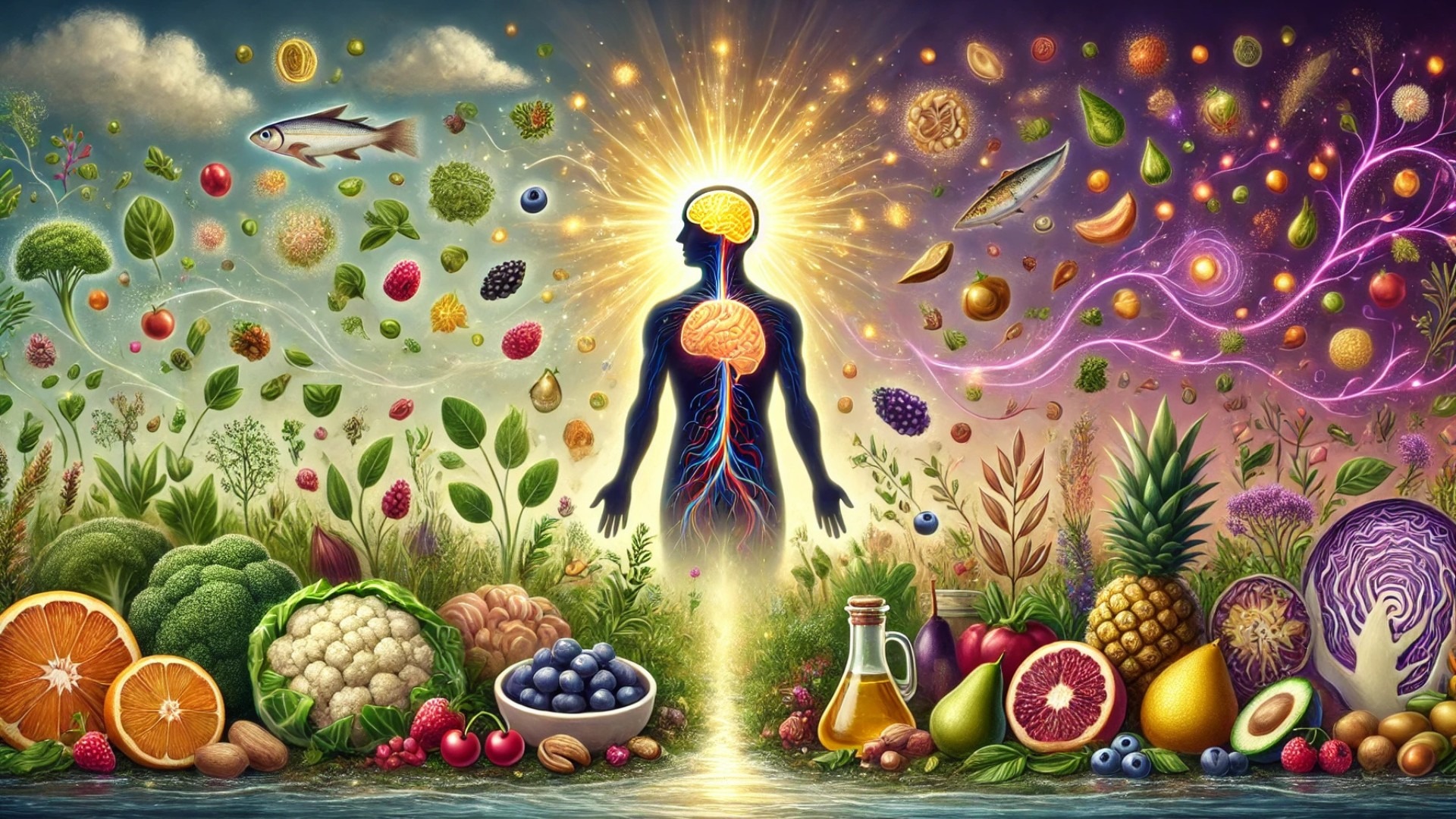
Mental health struggles—like anxiety, depression, fatigue, and brain fog—have surged in recent years, especially in the wake of the global pandemic. As more people seek holistic ways to support their emotional well-being, the science of nutritional psychiatry has become a powerful tool in the journey toward healing.
At its core, nutritional psychiatry is about using food as medicine to support brain function, emotional balance, and metabolic health. It’s not a fad or a quick fix—it’s a science-backed way to transform how you feel by changing what you eat.
Let’s explore the six core pillars of nutritional psychiatry so you can begin applying them today.
1. Be Whole, Eat Whole
The first step to a healthier brain is simplifying what’s on your plate. This pillar emphasizes the 80/20 rule:
80% of your diet should be made up of whole, real foods—vegetables, fruits, legumes, nuts, seeds, whole grains, and quality grass-fed/pasture-raised/wild-caught protein sources.
The other 20% allows for flexibility—so you can enjoy occasional indulgences without guilt.
Why it matters: Whole foods are packed with fiber, vitamins, minerals, and phytonutrients that feed both your gut microbiome and your brain. Fiber in particular is a favorite food of your good gut bacteria, which produce mood-supportive compounds like serotonin and GABA.
2. Eat the Rainbow
Plant foods of different colors contain different brain-boosting nutrients, and eating a rainbow of fruits and vegetables ensures you're nourishing your body with a full spectrum of benefits.
At each meal, aim for:
75% of your plate filled with low-glycemic, fiber-rich vegetables: spinach, cucumbers, eggplant, mushrooms, radishes, tomatoes.
The remaining 25% made up of healthy fats (like olive oil, hemp seeds, or walnuts), low-glycemic carbs (like quinoa or cauliflower), and clean proteins (such as salmon, sardines, grass-fed beef, lentils, or chickpeas).
This combination supports steady energy, reduces inflammation, and improves mood and mental clarity.
3. The Greener, The Better
Leafy greens are true brain food. Spinach, chard, collard greens, arugula, romaine, and even dandelion greens are loaded with folate—a B-vitamin essential for neurotransmitter function.
Aim to eat 4–6 cups of greens a day to support:
Healthy cognition
Reduced symptoms of depression
Neuroplasticity and emotional resilience
Greens are your daily multivitamin, straight from nature.
4. Tap Into Your Body Intelligence
Mindfulness is a form of self-care—and this includes being mindful of how food affects your mood, focus, and energy levels.
If you feel irritable or tired after a sugary breakfast, take note. If certain meals make you feel bloated, foggy, or anxious, that’s your body speaking. Tune in and respond with curiosity, not judgment.
This is your body intelligence—an inner compass guiding you toward choices that align with your personal mental and metabolic well-being.
5. Consistency and Balance Are the Key
There’s no such thing as the perfect diet, and you don’t need to overhaul your life overnight. Sustainable mental health comes from consistency, not perfection.
Returning to the 80/20 rule is a great way to stay balanced and enjoy life while still prioritizing your health. Your brain thrives on rhythm, routine, and steady nourishment—not on extreme diets or deprivation.
6. Avoid Anxiety-Triggering Foods
To fully benefit from all the positive changes you’re making, it’s important to reduce or eliminate foods that sabotage your mental health. These include:
Refined and added sugars
Processed meats with nitrates (e.g., deli meats, bacon)
Industrial seed oils like soybean, corn, or grape seed oil
Artificial additives and ultra-processed snacks
These foods increase inflammation, disrupt gut health, and trigger anxious, irritable, or depressive symptoms for many people. Instead, choose colorful, fiber-rich whole foods that leave you feeling calm, clear, and energized.
Food for Thought: A Healthier Mind Starts on Your Plate
As the silent pandemic of mental health challenges continues, embracing nutritional psychiatry can offer lasting support for emotional resilience, clearer thinking, better sleep, and more vibrant energy.
Begin by incorporating one or two of these pillars into your daily life. Add a handful of greens to your lunch. Choose olive oil over canola. Swap sugary snacks for nuts and berries. Then build from there.
You’ll be amazed how much your mood, focus, and vitality improve—just by feeding your brain what it truly needs.
Need help getting started? Stay tuned for upcoming recipes, food mood journals, and functional nutrition tools to help you apply these six pillars in real life—one delicious meal at a time at larsonhealthweightloss.com
 Add Row
Add Row  Add
Add 










Write A Comment